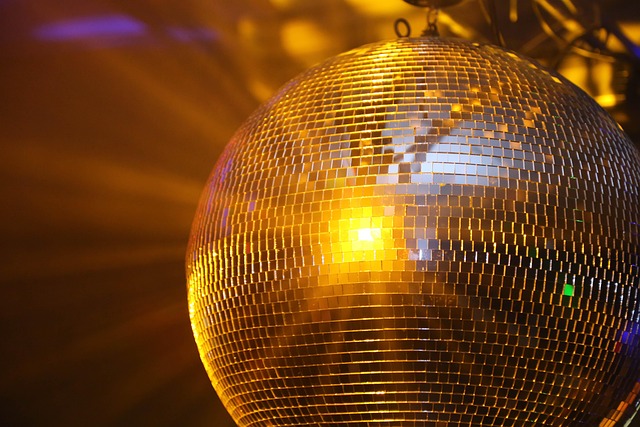Since the early 1970s, disco has been more than a dance style; it has become a cultural force that reshaped nightlife, fashion, and the way audiences experience music. The late‑night clubs of New York, the shimmering lights of Miami’s Paradise, and the rhythmic basslines that carried audiences into the 1980s all spoke to a generation craving rhythm and unity. Decades later, the sound of that era has begun to seep back into contemporary music festivals, cinematic soundtracks, and the global music business, demonstrating disco’s enduring appeal and its capacity to evolve with modern sensibilities.
Revitalizing the Dancefloor: Contemporary Festivals Embrace Disco Beats
Modern music festivals such as Tomorrowland, Coachella, and the newly established Pulse Festival have incorporated retro‑inspired nights that highlight disco’s timeless grooves. In 2023, a special “Disco Revival” day at Tomorrowland featured DJs remixing classic tracks from Donna Summer and Bee Gees while infusing them with contemporary EDM production techniques. Attendees wore sequined outfits and mirrored sunglasses, echoing the iconic style of the 1970s while dancing to a blend of 4/4 beats and synth‑driven bass lines that pay homage to the original sound.
- Dance floors lit with strobe and laser lights create a nostalgic atmosphere that feels both retro and forward‑looking.
- Artists like The Chemical Brothers and DJ Snake incorporated disco samples into their sets, bridging generations.
- Festival organizers offer themed stages with vintage décor, complete with glittering disco balls.
Industry Adaptation: Record Labels and Producers Re-Explore Disco
Record labels such as Def Jam and XL Recordings have signed artists who specialize in “Disco‑inspired” pop. Producers like Pharrell Williams and Mark Ronson collaborate with seasoned disco musicians, creating new tracks that maintain the groove while embedding modern vocal hooks and digital effects. The result is a hybrid genre that satisfies purists and new listeners alike, demonstrating how disco’s foundational elements—syncopated basslines, string arrangements, and rhythmic horn sections—can coexist with contemporary production tools.
“We’re not just recreating disco; we’re taking its core and making it feel alive for today’s audience,” says producer Mark Ronson.
Disco’s Cinematic Influence: Soundtracks and Visual Storytelling
Movies that revolve around nightlife and dance scenes frequently tap into disco’s vibrant energy. Recent releases like “The Rhythm of Freedom” (2024) and “Sparkle City” (2023) feature soundtracks that weave classic disco tracks with newly composed scores, enhancing the narrative’s emotional depth. Directors use the music to underline themes of liberation, community, and rebellion, resonating with both younger and older audiences. Additionally, the visual style—bright lighting, mirrored floors, and synchronized choreography—mirrors the aesthetics of disco culture, creating a seamless audiovisual experience.
Studio Production: Remixing Disco for the Streaming Era
Streaming platforms such as Spotify and Apple Music have curated extensive disco playlists that attract millions of listeners. Artists and DJs remix classic tracks, adding modern bass drops, glitch effects, and vocal chops that align with the expectations of contemporary listeners. The result is a genre hybrid where the timeless groove of disco meets the immediacy of digital platforms, making the music more accessible to younger generations who discover it through algorithm‑driven recommendations.
- Classic songs are remastered with higher fidelity and cleaner mixes.
- Remixes often feature contemporary rap verses or pop choruses.
- Playlist algorithms boost disco tracks that match current listening patterns.
Business Model Shifts: From Club Nights to Multi‑Platform Experiences
With the decline of traditional club venues, the music industry has pivoted toward integrated experiences. Disco revival nights now combine live performances, VR dance rooms, and interactive lighting systems. Companies such as DJTech and LightLab design modular systems that can transform any space into a disco sanctuary. The combination of physical and virtual components attracts a broader audience, allowing the genre to maintain relevance while adapting to changing consumer preferences.
Revenue Streams and Sponsorships in the Disco Renaissance
Brands targeting the nostalgic yet progressive vibe of disco have started sponsoring revival events. Beverage companies, fashion houses, and tech firms invest in disco nights, capitalizing on the genre’s vibrant image. Revenue streams now include ticket sales, merchandise, digital downloads, and brand activations. These collaborations underscore the commercial viability of disco’s resurgence and its capacity to generate sustainable profits across multiple markets.
Global Perspective: Disco’s International Appeal
While disco originated in the United States, its influence has spanned continents. In Brazil, the annual Rio Disco Festival fuses samba rhythms with classic disco beats, creating a unique cultural fusion. In Japan, the city of Osaka hosts a “Disco Nights” club that blends J‑pop vocalists with retro funk instrumentation. These events illustrate how disco’s universal language—rhythm, dance, and communal joy—can be adapted to local cultures while preserving its core essence.
Future Trends: The “New Beat” and Disco’s Next Evolution
Emerging producers are experimenting with a “new beat” that melds disco’s syncopated bass with micro‑tempo variations and AI‑generated melodies. This evolution aims to keep the dancefloor alive while offering fresh sonic textures. The integration of artificial intelligence in songwriting and production further expands disco’s creative boundaries, allowing for personalized playlists that adapt in real time to listener preferences.
Conclusion: Disco’s Legacy and Its Modern Rebirth
Disco’s journey from underground club phenomenon to mainstream pop icon has proven that rhythm can transcend time. Today, its revival across festivals, cinema, and the music industry showcases a dynamic interplay between nostalgia and innovation. By embracing new technologies, collaborative production, and global cultural exchange, disco continues to evolve, ensuring that its beats remain an integral part of the entertainment landscape for generations to come.


